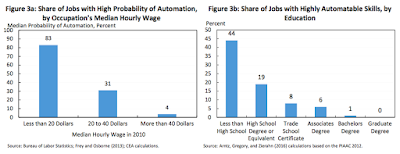Cities are the acknowledged engines of economic growth. But what if important determinants of economic growth, like new investments and job creation, are not the focus of city administrators? The contrast between India and China could not have been starker.
In a recent presentation, Stanford economist Chang Tai Hsieh pointed to the incentive compatibility in China's local governments. The Mayor in Chinese cities spend a significant amount of their time engaging directly with investors - meetings, dinners etc - and courting them to invest in the city. It does help that their promotion within the Party is closely linked to their success with economic growth in their jurisdiction.
The Mayor then develops a personal interest to help cut through local government bureaucracy (or skirt around) and ease the path to facilitate investments. However forbidding the bureaucratic layers and corruption, and they are not any significantly better in China than in India, this was a powerful force for good.
But this also meant that the Mayor could potentially misuse his powers and fuel crony capitalism. Here it helped that there was one important lever that was outside the Mayor's control - Finance. This meant that the investor had to pass a form of "market test" in accessing capital. Not only did this keep egregious cronyism in check, but also ensured that the firms which came up were competitive enough. Another example of "capitalism with Chinese characteristics".
One would imagine that this is exactly what Indian cities need. Whereas Chinese Mayor's incentives are aligned towards attracting investments to achieve growth, for Indian Mayors or Municipal Commissioners, economic growth is almost never a priority. It does not help that they get bogged down by the weight of routine administration - tax collection, sanitation, and public works. I cannot think of any city courting investors with summits and road shows. Even in the largest cities, investment promotion is invariably a state government responsibility. In the rare case of Urban Development Authorities being involved, it is largely confined to making ring roads and developing layouts for industrial parks.
In fact, in India, Municipal Commissioner or Mayor dining with investors and industrialists is most likely to be viewed with suspicion and strongly discouraged. Taking personal interest in the troubles faced by an investor or business enterprise, howsoever genuine the grievance, is more likely to be seen as an attempt at cronyism than as an effort to increase economic growth. This paranoid caution is seen across all levels of government.
Leave aside dining, officials in infrastructure ministries in both state and centre, try to even avoid direct engagements with businesses, who are their primary stakeholders. Remember, one of the central points in CBI's case to establish "criminal conspiracy" against the former Coal Secretary, Mr PC Parakh, was the official meeting between the Coal Secretary and Mr Kumar Mangalam Birla in the former's office before the coal block allotment was made.
Given the country's notorious history of corruption and cronyism, such social conditioning may not be that bad. Unlike the disciplining presence of the Chinese Communist Party, there are no equivalent effective institutional deterrents in India. But that is no excuse for completely ring-fencing off arguably the most important urban development objective from the canvas of municipal government responsibilities.
It is a different matter that in 2009, the Chinese government liberalised rules (not clear about the details) and allowed Mayors to influence financing too. This, potentially, contributed to an increase in cronyism among local governments!
In any case, the issue again highlights the importance of reforming the country's current municipal governance system. I had blogged earlier about the close resemblance in work practices of Chinese Mayors and Indian Municipal Commissioners, but with with very different outcomes.
It is unlikely that the current city leaders, bureaucratic Municipal Commissioners will be able to perform such roles. For a start, growth promotion and the relationship building that accompanies it requires a much longer duration than their typical two year tenures. Second, the incentives of Municipal Commissioners are aligned towards more bureaucratic achievements - increasing tax revenues, completing projects, getting cleanliness awards etc. Third, decisions involving investment promotion are largely political in nature and not amenable to bureaucratic processes. For example, giving a concession of whatever kind to one investor is a judgement call to further a relationship, which would not pass the typical bureaucratic test of "why this and not others?". Fourth, howsoever public spirited, transferable Municipal Commissioners are unlikely to have the same commitment and passion for a city's long-term growth as local residents like a Mayor.
This blog has argued with increasing vehemence about having empowered executive Mayors for Indian cities, assisted by Municipal Commissioners. In such an arrangement, the Mayors would lead the city's long-term growth focus, with the Municipal Commissioner responsible for effective administration. The former would engage very closely with the Urban Development Authority and State industrial promotion agencies to plan the city's long-term development and attract investments. The latter would provide all requisite administrative support in that regard.
Cronyism and corruption are inevitable with such industrial promotion activities, and instead of the state and national governments, the same set of transactions now get devolved to local governments. Further, it may not be an entirely bad idea to have such delegation because the accountability channels are likely to be much stronger between the Mayors and their electorate than for the Chief Ministers with their electorate.





